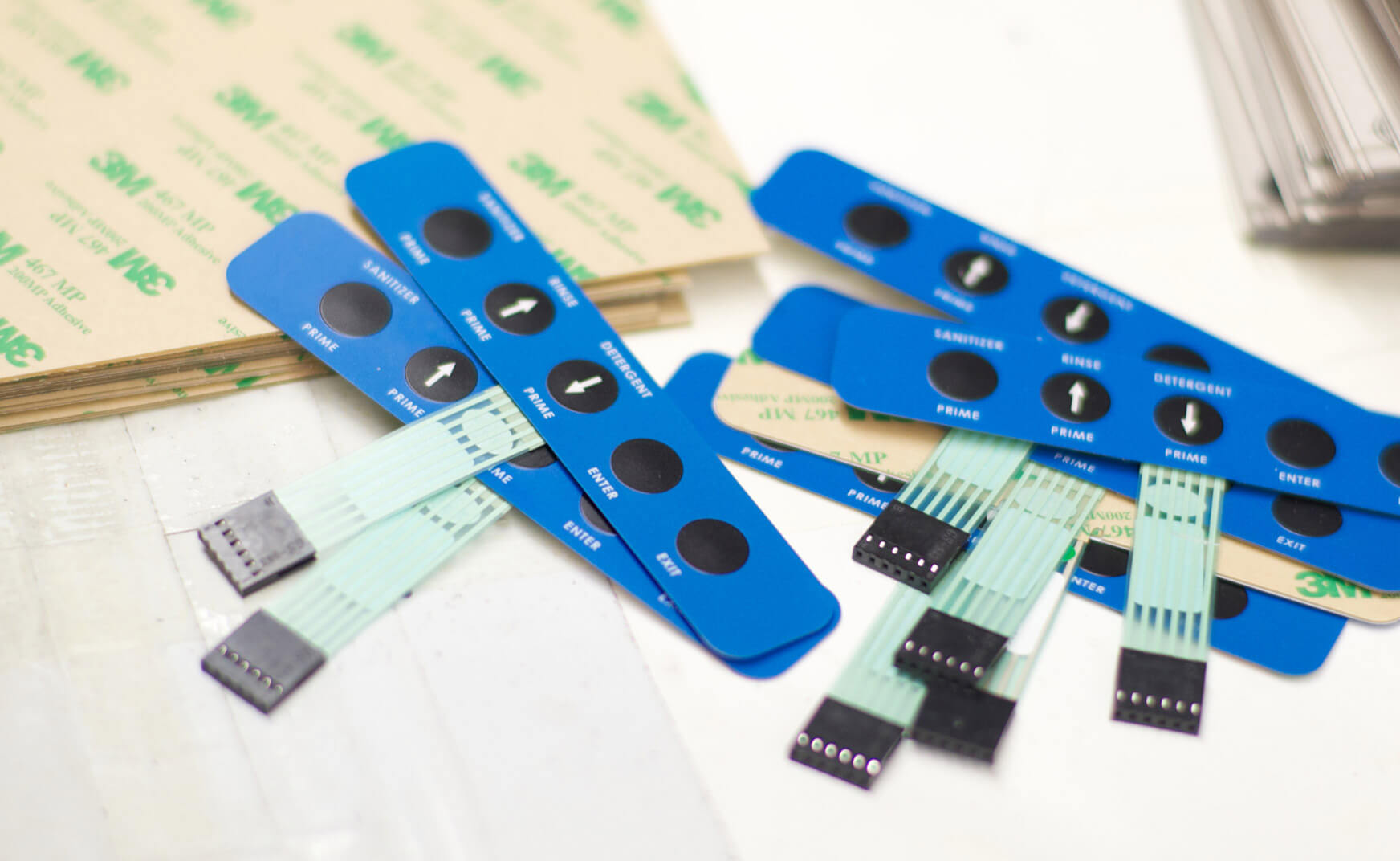Understanding the Functionality of Membrane Layer Switches Over for Interface Devices
The functionality of membrane switches over represents a significant improvement in interface style, incorporating efficiency with aesthetic convenience. These switches run with a multi-layered framework that equates individual communications right into electrical signals, permitting both portable designs and resilience against ecological factors. As industries progressively prioritize customer experience, understanding the nuances of membrane layer switch innovation comes to be crucial. What ramifications do these advancements hold for future applications, and exactly how might they redefine individual interactions throughout numerous tools?
What Are Membrane Layer Buttons?
Membrane layer switches are innovative interface devices that promote customer communication with digital tools. These versatile parts contain several layers, consisting of a visuals overlay, spacer, and a printed circuit layer. The style allows for a smooth integration into different electronic devices, enhancing both the aesthetic and practical elements of customer interfaces.
Membrane switches are generally used in a wide variety of applications, from house appliances to commercial equipment and clinical devices. Their building normally includes a thin profile, making them a perfect choice for compact styles. The tactile responses supplied by these switches can be crafted to meet specific individual choices, ensuring efficient communication between the individual and the tool.
Toughness is one more significant advantage of membrane layer switches, as they are immune to dust, moisture, and chemicals, which boosts their lifespan sought after environments. Furthermore, these switches can be customized in regards to form, dimension, and graphic layout, permitting branding and user-specific features. In general, membrane layer switches over represent a practical solution for enhancing user experience in digital tools, combining functionality with visual charm in a reliable way.
Exactly How Membrane Layer Changes Job
Operating on a straightforward concept, membrane layer switches utilize a split construction to register user input successfully. Each switch consists of multiple layers, consisting of a published circuit layer, a spacer layer, and a top graphic layer, which are designed to collaborate flawlessly. When a customer presses the top layer, it compresses the spacer layer, bringing the conductive elements of the circuit layer right into contact with each other.
This call produces a shut circuit, signaling the gadget to carry out a certain feature. The style permits different setups, consisting of responsive responses, which can enhance the user experience by giving a physical feeling upon activation. The products utilized in membrane layer switches commonly consist of versatile substratums, such as polyester or polycarbonate, which guarantee durability and resilience against wear and tear.

Trick Advantages of Membrane Layer Buttons

An additional significant benefit is their density. Membrane layer buttons are thin and light-weight, which allows producers to conserve space in their devices without sacrificing capability. This function is especially advantageous in applications where weight and quantity are vital considerations.
Furthermore, membrane buttons are resistant to dirt, dampness, and chemicals, boosting their longevity. This resilience expands their life expectancy and lowers the requirement for constant substitutes, resulting in cost savings gradually.
In addition, the responsive feedback provided by membrane layer buttons can be optimized to improve customer communication. They can include attributes such as elevated switches or distinct clicks, enhancing functionality and individual experience.
Applications Across Industries
Interface gadgets utilizing membrane switches prevail in a vast selection of sectors, showcasing their flexibility and functionality. Membrane Switch. In the clinical sector, membrane switches are important to gadgets such as diagnostic devices and individual monitoring systems, where their toughness and simplicity of cleansing are critical for maintaining health standards. Similarly, in the vehicle industry, these buttons are utilized in control panel controls and infotainment systems, supplying a streamlined and contemporary interface for users.
Moreover, the customer electronic devices sector benefits from membrane layer buttons in home appliances and handheld gadgets, where compact layout and user-friendly interfaces boost individual experience. Industrial applications likewise leverage membrane layer changes for control panels in equipment and automation systems, highlighting their toughness and resistance to extreme environments.
In the aerospace and defense markets, membrane layer switches are utilized in cockpit controls and equipment, where dependability and performance under extreme conditions are paramount. Furthermore, the pc gaming market progressively integrates membrane switches in controllers and game devices, her explanation adding to an appealing user experience. In general, the versatility of membrane switches over enables their widespread use across many markets, underscoring their relevance in modern individual interface design.
Future Patterns in Membrane Switch Innovation

Additionally, making use of advanced products, such as polycarbonate and polyester films, is anticipated to climb, providing improved sturdiness and resistance to environmental stress factors. These materials contribute to the overall durability of membrane buttons, making them ideal for harsher commercial applications.
Additionally, the unification of wise technology, consisting of IoT connection, will certainly allow membrane layer buttons to connect with various other devices and systems, facilitating a much more interactive user experience. visit this page This pattern aligns with the growing need for smart tools throughout different markets, from medical care to consumer electronic devices.
Last but not least, personalization alternatives are anticipated to broaden, enabling manufacturers to develop bespoke services tailored to specific customer demands and choices. These advancements will certainly position membrane layer switches as important elements in the advancement of interface modern technology.
Conclusion
In verdict, membrane switches stand for a crucial improvement in individual interface innovation, supplying a reputable and flexible option for diverse digital applications. As developments in material science and touch sensing innovations proceed, the functionality and applicability of membrane layer buttons are anticipated to find out here broaden, enhancing their importance in contemporary digital gadgets.